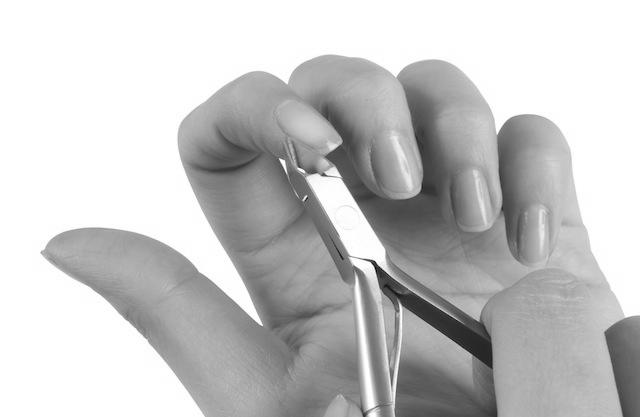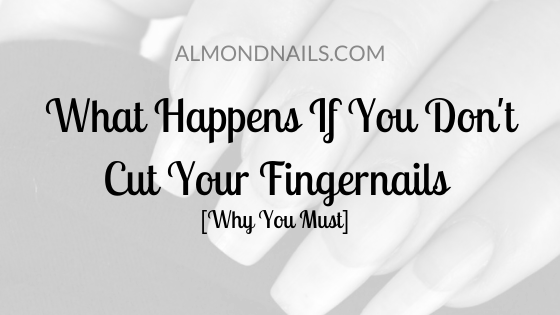- My Fingernail Keeps Receding – What Do I Do?
- Onycholysis causes a receding fingernail.
- It can be caused by injury, skin disease, or infection.
- Does Trimming Your Nails Make Them Grow Faster?
- Do you need to trim your nails every week?
- Is it sustainable for healthy nails?
- Is it necessary for fast-growing toenails?
My Fingernail Keeps Receding – What Do I Do?

If your fingernail is receding, you may have a condition called onycholysis. Receding fingernails can be a sign of an underlying medical condition, like an injury, skin disease, or infection. Read on if you think your nail is receding and wonder how to treat it. The treatment options for onycholysis depend on the severity of the problem and the treatment you choose.
Onycholysis causes a receding fingernail.

While onycholysis is a reasonably common condition, it is also a potentially serious one. This condition results from a fungal infection of the nail that thickens the tissue underneath the nail plate. Other causes include allergies, psoriasis, and medications from the tetracycline and fluoroquinolone groups. Onycholysis is also associated with an iron deficiency.
One of the main symptoms of onycholysis is a gap under the nail. The disease begins with a white or yellow patch on the tip fingernail and progresses down to the cuticle. The hole can then become infected with bacteria such as pseudomonas, producing a dark green pigment. This condition can cause the nail to become infected and look suspicious.
Another cause of onycholysis is trauma to the long fingernail. It usually occurs in just one fingernail and heals by itself. In some cases, however, it can be caused by over-vigorous cleaning under the nails. This can result in the nail plate separating from the nail bed. This condition will not usually cause any pain and will often heal independently.
When treatment is ineffective, the doctor may opt for surgical procedures. These methods are based on the severity of the condition and available treatment options. While there are many surgical options for this condition, a thorough clinical evaluation is the only way to know if your treatment is effective. For example, a doctor can perform a Swiss roll technique that elevates the fold of the nail.
A medical condition called hyperthyroidism may cause onycholysis. This disorder causes the thyroid gland to produce too many hormones. This condition can lead to unexplained weight loss, anxiety disorders, and a rapid heartbeat. Another complication of onycholysis is a fungal infection. While fungal infections are not contagious, they can lead to the same problem.
Nail psoriasis is another condition that can lead to onycholysis. These conditions are similar to fungal infections of the nail, so a biopsy is necessary to make a definitive diagnosis. If you suspect you are suffering from either of these conditions, you may need to consult with a dermatologist. A dermatologist can prescribe a medication to prevent the fungus from spreading to other parts of the body.
It can be caused by injury, skin disease, or infection.

Infections of the skin can occur for several reasons, including injury, skin disease, or condition. Cellulitis is a bacterial infection that usually affects the lower legs but can occur anywhere on the body. Cellulitis usually begins as a small, shallow skin cut or wound and can spread to deep tissues underneath. If left untreated, cellulitis can result in a blood infection. This infection is uncomfortable and can lead to other health problems.
If you’re looking for information on how to treat an infection of the skin, MRSA may be the right place to start. The disease is caused by bacteria and can be very dangerous, as it doesn’t respond well to antibiotics. The symptoms of this infection are painful red bumps that may feel warm to the touch. It is often accompanied by a fever and occurs near close quarters, so it’s essential to seek medical treatment if you see any symptoms.
If you notice that your fingernail keeps receding, it may signify an underlying condition. A common cause is an onycholysis, a condition that causes the nail plate to separate from the nail bed. Onycholysis can be caused by many diseases, including trauma to the nail or fungal infection. It is essential to consult a dermatologist as soon as possible, as treatment can help to cure the underlying condition.
If a fungus causes the problem, treatments are available that kill the fungus that causes it. Laser therapy uses a beam of light that disrupts the nail tissue, killing pathogens that cause the condition. Laser therapy is not a cure, and patients may require more than one session. It can also be expensive, but it is an effective treatment for some people.
Does Trimming Your Nails Make Them Grow Faster?
Curious whether trimming your nails every week will help them grow faster? This article will discuss whether trimming your nails is necessary for healthy, fast-growing toenails and whether it is even possible. First, let’s look at why cuticles are essential. According to dermatologist and nail specialist Dr. Chris G. Adigun, cuticles are a protective barrier between the skin and the nails. By cutting your cuticles, you’ll expose your pin to infections and a weakened wall.
Do you need to trim your nails every week?
Many experts say that you should trim your fingernails at least once a week to keep them looking healthy. While some hygiene tasks may seem second nature, others might be more difficult to remember. A weekly manicure or pedicure can help prevent infections and breakage by keeping nails clean and trimmed. Listed below are five reasons why it’s essential to decorate your nails regularly. And don’t forget about your toenails!
To cut your nails, you need to remember a narrow range of acceptable lengths. The “white” at the tip of the nail in the space separates it from the skin. The “white” should be narrow enough so that it doesn’t distort the rounded shape of your finger. The nail should also be an inch or two longer than your fingertip. If your nails have grown past the top of your fingertips, you’re due for a trim.
If you’re not confident in the clipping process, you can try using a nail clipper. A nail clipper should be used to cut your fingernails, and use it regularly. It’s best to use a suitable nail clipper to ensure that your nails are properly trimmed. Make sure to clean underneath the tips and file rough spots before you start cutting them. Then, start clipping!
People should keep their nails trimmed regularly to prevent injuries and infections. But if you cut them too short or too long, it could damage your nail’s ability to grow in the future and cause other complications. Trimming your fingernails too much can even lead to ingrown nails and a doctor’s visit. If you don’t cut them at least once a week, you’re doing your body a disservice.
Is it sustainable for healthy nails?
Healthy nails are short and even, with no visible cuts. Cuticles protect the nail root from bacteria. Constantly cutting and trimming nails can cause ridges. By scaling back on the number of trims, you can prevent potential peaks. It would help to moisturize your nails after cutting them to keep them flexible. It is essential if the air is dry. Taking these precautions will make your nails more resistant to breakage.
Is it necessary for fast-growing toenails?
Did you know that you don’t need to trim your toenails every day? You may be wondering if trimming your nails is necessary for fast-growing toenails. It is recommended to cut your nails every couple of weeks, but you don’t need to decorate your fingernails every day. If you do it daily, you risk creating a situation where your toenails grow out too fast, causing you to get painful ingrown toenails.
Toenails grow about one millimeter per month, much less than fingernails. If you aren’t sure what to do, keep in mind that nail growth differs from one person to another. Generally, fingernails grow three to four millimeters each month, while toenails tend to grow slightly slower–around a millimeter. However, your dominant hand’s nails may be growing faster than your other hands.
To avoid this, you should keep the white area at the tip of your nail; this area is susceptible, and cutting it short can damage the nail bed. It is also essential to keep your clippers clean between uses, as the same nail clippers can transfer bacteria. A good rule of thumb is to clip your toenails every six to eight weeks. It would help if you also kept in mind that not all clippers are the same, and the suitable clipper for your toenails may be different from the one you use for your fingernails.
Besides preventing ingrown toenails, it can also prevent infections. The most important thing to do is to prevent the condition from worsening. If you’re worried about ingrowing toenails, you should go to a doctor. Toenails grow at different rates. Trimming them will prevent future problems such as an infection or even an ingrown toenail.
Before clipping your nails, soak your feet in hot water. It will soften the calcified growth on your nails. It will also reduce the risk of splitting or breaking. Also, dry your hands and feet thoroughly since thick nails tend to be more complicated than fingernails. An adequately dried foot will make trimming your toenails much easier and safer.
Another thing to remember is a narrow range of acceptable lengths. In most cases, “white” space should be left at the top of the nail. Ideally, this space should be the same length as the rounded shape of your finger. Moreover, you should avoid trimming your toenails if they go beyond the tip of your finger.








